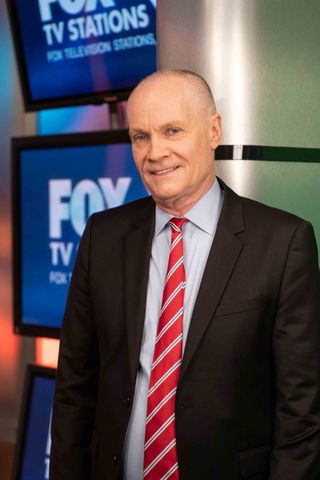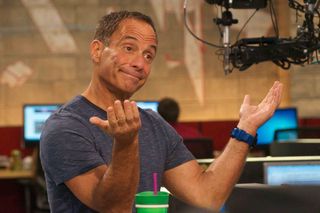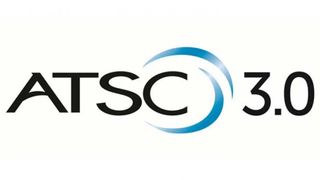Abernethy Keeps Fox Stations Focused on Local

WHY THIS MATTERS: Jack Abernethy’s role running Fox’s station group will gain even more importance as the post-Disney deal “New Fox” hones its focus on live content.
Anyone who thinks the broadcast business is slowing down should spend a day — or just half an hour — with Jack Abernethy.
Abernethy is chief executive officer of Fox Television Stations, overseeing 28 stations in the nation’s major markets, including WNYW New York, KTTV Los Angeles and WFLD Chicago. Since his start there in 2004, the Fox-owned stations’ locally produced programming has more than doubled, with more than 970 hours of local news a week these days.
Up until a few months ago, he was simultaneously co-president of Fox News Channel and Fox Business Network, overseeing business components of both networks beginning in 2016. (He was executive vice president of Fox News from 1996 to 2004, helping launch the cable network, after more than 15 years at NBC.)
These days, Abernethy is chest-deep in issues pivotal to the station group’s future: building a streaming platform, reacting to viewers’ changing tastes in news, assessing the deal market for stations and taking full advantage of ATSC 3.0. He also continues to out-local the competition in content, news and charity efforts in the community.
For these reasons, Abernethy was named Broadcaster of the Year by B&C, and will be toasted Sept. 28 at the TVB Forward conference in New York. Mark Robichaux, managing director of content for B&C and Multichannel News, singled out Abernethy for being “a pillar in the local TV community, tirelessly pushing the Fox station group to further its relationship with viewers in its markets, and setting standards that other groups can emulate.”
The Fox veteran was inducted into the B&C Hall of Fame in 2012.
Broadcasting & Cable Newsletter
The smarter way to stay on top of broadcasting and cable industry. Sign up below
Abernethy spoke with B&C senior content producer Michael Malone about the current year, and the future, for the Fox-owned stations. Here’s an edited transcript of their conversation.
What are a few things from the station group this year that made you particularly proud?
The number of test shows that we’ve done. We get two hours a day from the network, and the rest of it we’re on our own. Primarily we do local news, but we’re also dependent on syndicated shows, and we had six or seven tests this year. Some of them we did with Mark Burnett, some of them we did on our own, some we did with Warner Bros. They were good shows. We don’t know how many of them we’ll go ahead with, but we’re very proud of the way that worked out.

When you have a group as large as ours, the successes are rarely group-wide. We love to take credit from the corporate standpoint for everything, but the reality is that successes come from the markets. We’ve had tremendous success in Minneapolis, where we’ve expanded news [at KMSP]. We’ve done a local show there [The Jason Show] that’s in its third year, and continues to do well. It’s one of the few local talk shows. Their news competition is really strong, so that station has done really well.
[WTTG] Washington has expanded to two hours [of news] at night, and it’s been really successful.
The other thing that worked out really well is the World Cup. The timing was not good [the event was held in Russia, and the time in Moscow is five hours ahead of New York], and the U.S. team was not there. But we just decided to get b¯ind it. The ratings were a little bit below past years, but it was very successful, well beyond our expectations.
Digitally, the viewing on Fox Sports Go and Fox Now was very, very high and very encouraging, and that kind of drove those platforms because people went to authenticate. You had to watch it when you were at work, and if you didn’t have a TV in your office, you had to authenticate. That was a success.
How does local TV compete in this age of Netflix?
We’re excited about New Fox [the properties that will remain after The Walt Disney Co. closes its $73.1 billion purchase of 21st Century Fox’s content studios, entertainment cable networks and other assets] as kind of a Netflix OTT platform to pick and choose what you’re viewing, how you’re viewing it, and then live/as-live platforms, and that’s what local news is. We see that stream of local live news, and then programming like TMZ or Judge Judy as live programming and then sports, and premier events on [the Fox Broadcasting network] as being a different experience than choosing among the scripted and other choices on those platforms. That’s at least how we see it, and I’ve always thought there’s an opportunity there to watch live.
We’ve always seen young people following in their parents’ footsteps in terms of watching local news. Any concerns that this younger generation just doesn’t follow suit with how their parents consume news?

I think there’s a concern, which means you’ve got to focus on mobile, and we have to have our digital products be up to snuff because that’s the first place that young folks are going to touch our product and experience our product. The concerns that draw people to local news, I think, will still be the same. They’re concerns that draw you to your community. A young person wanting to know what’s going on with the storm tonight is going to be drawn to local news for the same reasons that they were 15, 20 years ago.
What will New Fox mean for the station group after Disney’s acquisition happens?
I think it means a more-focused company, and it will definitely mean more integration of our digital objectives, our programming objectives. We’re pretty well-aligned with Fox News already, so that part is working pretty well, but there could be some further ways to put those things together. It allows us as a company to really rally around that. In our case, it will be [four] live or as-live streams: us, FS1, Fox News and Fox Business.
Were you surprised by what happened with Sinclair Broadcast Group and Tribune Media trying to get together?
I wasn’t surprised by them getting together. I was mildly surprised by them getting decoupled.
Does Fox look to acquire anything?
We had an agreement with Sinclair to purchase some stations. We are always looking for stations at the right price, that fit the profile that we have now — stations that have strong local news, and then have profiles that fit the NFL, college football and other products that we have.
Are you seeing much interest in stations from the private-equity firms?
I think there’s more interest because there’s a sense that this business is pretty healthy right now. Not all of media is healthy, but I think it’s a good time now in the station business. There’s upside in retrans and categories like gambling, and the fact that broadcasters are carried on virtually every bundle. Those are probably the reasons why it’s drawing attention from investors.
In terms of the group consolidation that’s been going on for some time, what do you see as the next step?
I think it’s going to be a continuous and gradual consolidation. It’s inevitable, given the benefits to everybody, be it consumers, communities, employees. There are a lot of parties involved, and there are complexities there because of the fact that it’s in the jurisdiction of both Congress and the FCC. But I see that continuing.
Why is consolidation a win for consumers?
It makes broadcasting healthier, and healthier broadcasting means more choices, more diversity and more local opportunities.
The truck that rammed into Fox’s Dallas station — how do you manage something like that?
We take security very seriously. With broadcast journalism, the building is the building, but broadcast journalists are outside. [On Sept. 5, a man who was upset about an officer-involved shooting rammed his truck into the KDFW studios.] They’re at events that are hard to manage and predict. They’re visual. We take it very seriously. We have a security guy and we train people. I’m not going to get into everything we do, but it is very much a concern. For me it always has been, just because of the visibility, and the attraction we [hold] for people, who are crazy or looking for attention in this environment. Fortunately, that one was OK, but we’ve had other incidents.
That incident was so out of left field. Had you trained for that sort of situation?
The training is for inside the building, but we’ve done a lot of things. All of our stations talk to their local police departments and make sure they have the floor plans. It’s a simple thing, but if there was an incident inside that building, they have the floor plan. We make sure there’s a lot of communication.
Has viewers’ taste for news changed? In the last couple of years, do you see that they’re suddenly really into a certain kind of story or less interested in something that was always a staple?
People want more authenticity and less Ron Burgundy, which is what we’ve tried to do. Particularly in our morning shows — less scripted, more ad hoc. I saw some research in the last year or two that said people wanted a little more seriousness. But I wouldn’t tell you that’s a major shift. This is some research we were looking at in a particular market, and they had done it years before, and the years before were more about personalities, who do I like? That was a newscast in a group that needed to be a little more substantial, and a little less light. But I don’t know whether that’s a trend.
When you were co-president of Fox News Channel for a couple of years, what did take away from that experience?
I learned what a resilient business that is, how absolutely strong they were in a very tough marketplace. I would challenge you to think of another news media that is as healthy, both in what they do on television and digital.
In terms of the Fox first-run programming, is there common ground among the ones that work?

The ones that have worked for our group have been different formats, with authentic performers. Wendy Williams, Harvey Levin [of TMZ] — they really come from a different cloth, are different from your typical TV person. I think that’s probably it. We tried a lot, and we continue to try. But those two [The Wendy Williams Show and TMZ] have been real hits. TMZ is very unique. A lot of people are trying to copy it. Wendy was a radio person who resisted attempts to turn her into a traditional TV personality, and to her credit it’s worked.
What do you watch for fun these days?
I watch a lot of sports. I like news and documentaries. I don’t watch as much TV as executives like myself; I probably read more than one would have guessed. But my wife and I like The Marvelous Mrs. Maisel. I just finished Godless.
How do you see midterm election spending going down?
It’s great through August. We’ll have to see; we’re coming down to the end. There are some primaries that are going on now, and then we’ll see what happens. I think it should be very strong. The last two years were a little disappointing, and the presidential wasn’t as much as we thought. But there’s a lot of interest particularly in the congressional races, and the tension for the House. I think you’ll find that everybody feels that way.
What’s your gut feeling on the future of broadcasting?
Short-term, it’s pretty good. The political advertising has been very strong, much stronger than we thought it would be. I still think there’s some retransmission consent upside that will help us financially. The gambling thing is going to provide a real jolt locally because most of these businesses are going to be local financially.
JACK ABERNETHY CAREER HIGHLIGHTS
► Under Abernethy’s leadership, Fox stations produce more than 970 hours of local news per week, more than any other owned-and-operated broadcast group, says Fox. Since 2015, Fox Television Stations has added more than 130 hours of local news per week and stations produce on average nearly 10 hours of local news per day, Monday through Friday.
► Fox Television Stations’ participation in the first-ever broadcast incentive auction resulted in $350 million for the station group.
► Fox stations have increased first-run programming pipeline through syndicated testing, delivering programs such as Wendy Williams, TMZ Live and The Real. Since 2013, FTS has been responsible for two-thirds of all first-run test shows and launches.
► Inducted into the Broadcasting & Cable Hall of Fame in 2012.
► Named to The Hollywood Reporter’s “35 Most Powerful People in New York Media” in 2017 and 2018.
► Served as executive VP of Fox News from 1996 to 2004 — part of the launch team and integral to the overall success of Fox News Channel. 4Served as co-president of Fox News Channel and Fox Business Network from August 2016 through May 2018, overseeing all business components of both networks and leading an overhaul of the executive team, hiring new management in advertising sales, finance and human resources.
► Distinguished 15-year career with NBC included being part of the launch team and CFO of CNBC and, earlier, six years at NBC O&Os in senior finance positions.
SOURCE: Fox Television Stations
How big a windfall might the retrans upside be?
I wouldn’t characterize it as a windfall, but I think the long road here is that broadcast stations contribute to these packages and I don’t think we’re fully there yet. I don’t think we’ve hit the ceiling the way some of these other channels already have.
I feel better about this business now than I have in a long time. The other thing where we’ve done well is skinny bundles. The OTT packages are growing nicely, and we’re in all of them. It also provides digital advertising opportunities. More viewing in these environments allows us to ultimately do dynamic advertising, and participate in that in ways you couldn’t necessarily with an MVPD over the air.
I’ve been branded a cynic on this, and this is much more long-term, but I think [ATSC] 3.0 is going to emerge as something where it looks like there are really opportunities. We’ve been working with some of the other groups. We’ve got a thing we’re doing in Phoenix, and we’ll be talking about more of that stuff going forward. There are some groups that are much more bullish [on ATSC 3.0] than I am, but I’ve become more bullish recently. It could be really interesting and exciting for broadcasting long-term.
What might ATSC 3.0 mean for the Fox stations? How will they incorporate that technology to make a better product?

It allows us to send out a very high-quality signal. But I think the real value could be in businesses or applications we’re not even aware of yet, such as [business-to-business] opportunities. In a world where mobility is everything and the cost of distributing is not zero, a one-to-many architecture is a tremendous advantage. My sense is that the real value will be not just Fox, but broadcasters collaborating and throwing together spectrum in each of these markets in a way that will be the basis of some really good business. We’re very involved in this. There’s a test going on, because we’ve got to get the technology up and running before we can expect people to come in and contribute. It’s going really well, and we’re looking for opportunities to work with partners in other markets.
It does feel, at least in the short-term, that there are some good things aligning. Especially for us, because we’re going to have much more of a razor focus with this New Fox.
Michael Malone, senior content producer at B+C/Multichannel News, covers network programming, including entertainment, news and sports on broadcast, cable and streaming; and local broadcast television. He hosts the podcasts Busted Pilot, about what’s new in television, and Series Business, a chat with the creator of a new program, and writes the column “The Watchman.” He joined B+C in 2005. His journalism has also appeared in The New York Times, The Philadelphia Inquirer, Playboy and New York magazine.

